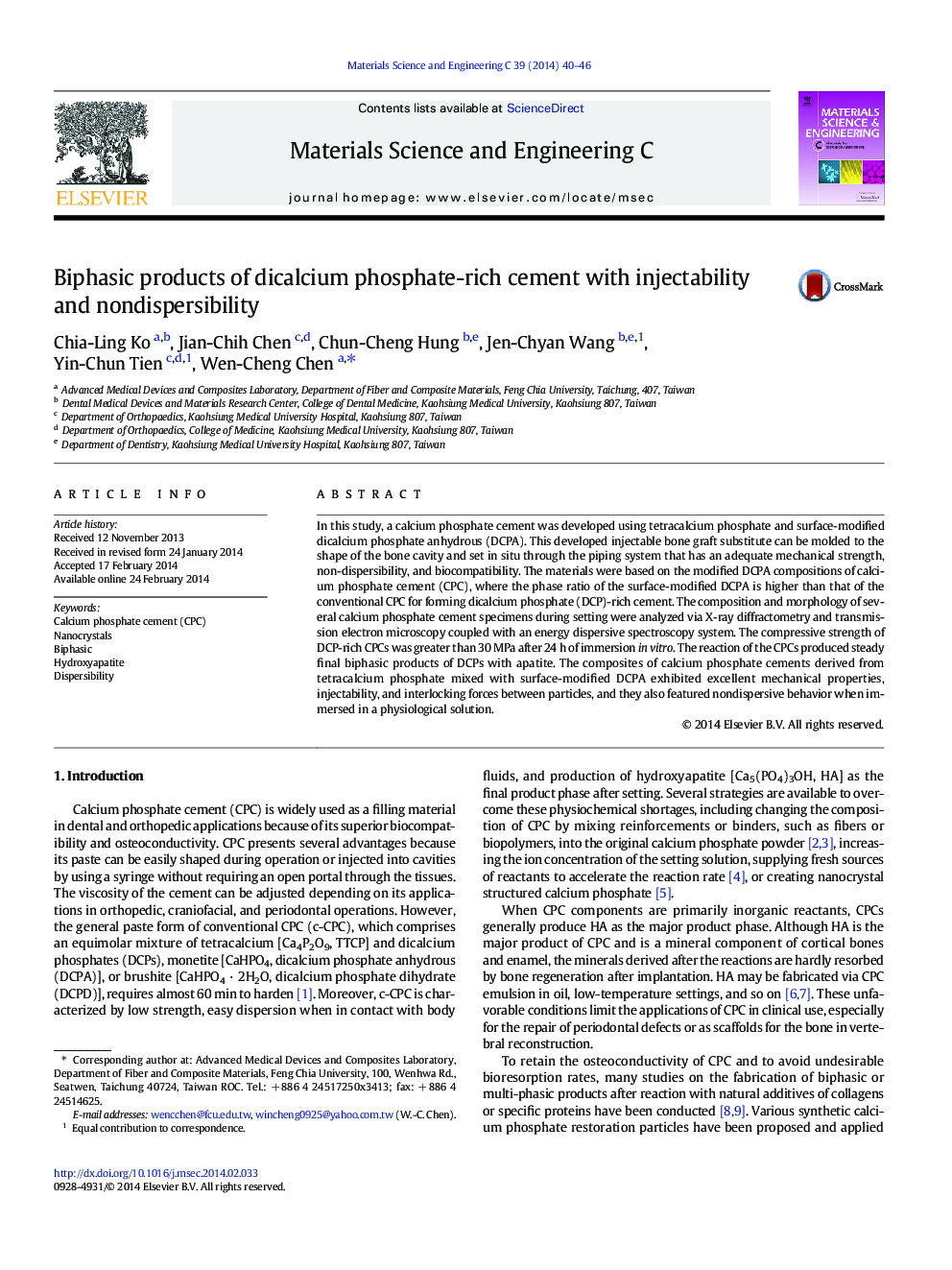| Article ID | Journal | Published Year | Pages | File Type |
|---|---|---|---|---|
| 1428760 | Materials Science and Engineering: C | 2014 | 7 Pages |
•Bone cement precursor with nanocrystals is characterized.•DCP-rich CPCs with nanocrystals exhibited biphasic product phases.•Nanocrystals in cement significantly affected the interlocking ability.•Nanocrystals in cement exhibited higher strength and anti-dispersion.•DCP-rich CPCs increase the potential of bioresorption after reaction.
In this study, a calcium phosphate cement was developed using tetracalcium phosphate and surface-modified dicalcium phosphate anhydrous (DCPA). This developed injectable bone graft substitute can be molded to the shape of the bone cavity and set in situ through the piping system that has an adequate mechanical strength, non-dispersibility, and biocompatibility. The materials were based on the modified DCPA compositions of calcium phosphate cement (CPC), where the phase ratio of the surface-modified DCPA is higher than that of the conventional CPC for forming dicalcium phosphate (DCP)-rich cement. The composition and morphology of several calcium phosphate cement specimens during setting were analyzed via X-ray diffractometry and transmission electron microscopy coupled with an energy dispersive spectroscopy system. The compressive strength of DCP-rich CPCs was greater than 30 MPa after 24 h of immersion in vitro. The reaction of the CPCs produced steady final biphasic products of DCPs with apatite. The composites of calcium phosphate cements derived from tetracalcium phosphate mixed with surface-modified DCPA exhibited excellent mechanical properties, injectability, and interlocking forces between particles, and they also featured nondispersive behavior when immersed in a physiological solution.
Graphical abstractFigure optionsDownload full-size imageDownload as PowerPoint slide
